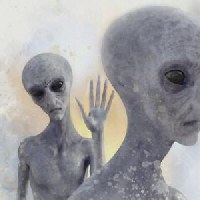Ghostly particles from space are giving us a new view of our galaxy.
Known as neutrinos, these subatomic particles have little mass and no electric charge. Theyre sometimes called ghost particles. Thats because they easily pass without a trace through gas, dust and even stars. High-energy neutrinos zip everywhere throughout the cosmos, carrying information about distant places. But where the particles come from has typically been a mystery.
Lets learn about ghost particles
Now, researchers found the first signs of high-energy neutrinos coming from within our Milky Way. They mapped the particles to create a new image of our galaxy. Its the first made with something other than light.
The map also hints at possible sources for these high-energy neutrinos. They could be the remains of past supernovas star explosions. Or they might come from the cores of collapsed supergiant stars or other unidentified objects. More research is needed to figure out the sources for all these neutrinos.
The new map of our galaxy was unveiled June 30 in Science.
Previously, only a few high-energy neutrinos have been traced back to their potential birth. They all came from outside the Milky Way. Two appeared to come from black holes shredding their companion stars. Others came from a type of galaxy called a blazar.
Explainer: Stars and their families
Its clear now that researchers are spotting neutrinos from both inside and outside our galaxy, says Kate Scholberg. Shes a physicist at Duke University in Durham, N.C., who did not take part in the new mapping project. Theres so much more to learn, she says. It can be tremendous fun to figure out how to see the universe with neutrino eyes.
Those neutrino eyes might one day allow us to see distant objects in a way that no other telescopes can match.
Some telescopes rely on visible light. Others pick up X-rays, gamma rays or the charged particles that make up cosmic rays. All of those types of light can be deflected or absorbed as they travel through space. Neutrinos, though, can cross huge expanses without being deflected. This allows the particles to tell us about very distant objects.
Three ways to map the Milky Way
Here are views of the Milky Way in visible light (top), gamma rays (middle) and high-energy neutrinos (bottom). Dust obscures portions of the visible-light map, and a variety of sources can generate gamma rays. Neutrinos have the potential to pinpoint remnants of supernovas, cores of collapsed stellar giants and other cosmic features.
IceCube Collaboration/Science 2023IceCube Collaboration/Science 2023
New look at old data
The ability of neutrinos to pass through things so easily also makes them extremely hard to detect. Scientists found the Milky Way particles using a neutrino detector in Antarctica. Called IceCube, this detector is embedded deep in the ice. To better detect ghostly neutrinos, its enormous. Its 5,160 sensors are arranged in a cube one kilometer (3,281 feet) on each side.
Even so, the experiment sees only a tiny share of the neutrinos that zip through space. IceCube scientists observe 100,000 or so neutrinos a year. Some of these neutrinos leave tracks in the detector. The scientists can sometimes trace these tracks back to the neutrinos source. Most of the neutrino signals that IceCube picks up, though, are a type called a cascade event. These leave bursts of light in the detector, but do not reveal a neutrinos origins as well as tracks can.
Astronomers used to throw away data on cascade events, says Naoko Kurahashi Neilson. Shes a physicist at Drexel University in Philadelphia, Pa. Those data can hold useful information about where the neutrinos come from. Its just hard to pick out which of those tens of thousands of cascade events are most important.
Kurahashi Neilson and her team took up the challenge. They dug through a decade of IceCube cascade-event data. They enlisted the help of an artificial-intelligence system known as a neural network. You can train the neural nets to identify which events are worth keeping, Kurahashi Neilson explains.
She pioneered this approach in 2017. Over the years, Kurahashi Neilson has steadily improved it. She and her colleagues have now used it to identify the neutrinos used to make the new map.
Its an impressive analysis, Scholberg says. And the technique may have the potential to be developed even more. Clearly a lot more work needs to be done, she says. But its very exciting to see the basic expectation [of Milky Way neutrinos] verified.

